......aaaaaaaaaaand here's another update! 
I have completed the car itself; now all that's left to do si to
construct the simple dio base.
From here, I will show how to
complete the weathering and snow cover on the model. First, here are the
products I have used for completion of the weathering. From top
left--MIG Pigment Fixer; MIG pigments P024 Light Rust and P230 Old Rust;
502 Abteilung (MIG's oil weathering line) #060 Light Rust Brown; #070
Dark Rust, 020 Faded Dark Yellow (which is really a light orange); and
standard Raw Umber and Burnt Sienna Deep oil paint.

I start by applying a varied combination of oil colors in the exposed
dark rusted area, and then I pull them down to make streaks. Use a
variety of the colors, and put dark colors first, and lighter colors on
top, because new rust is lighter.
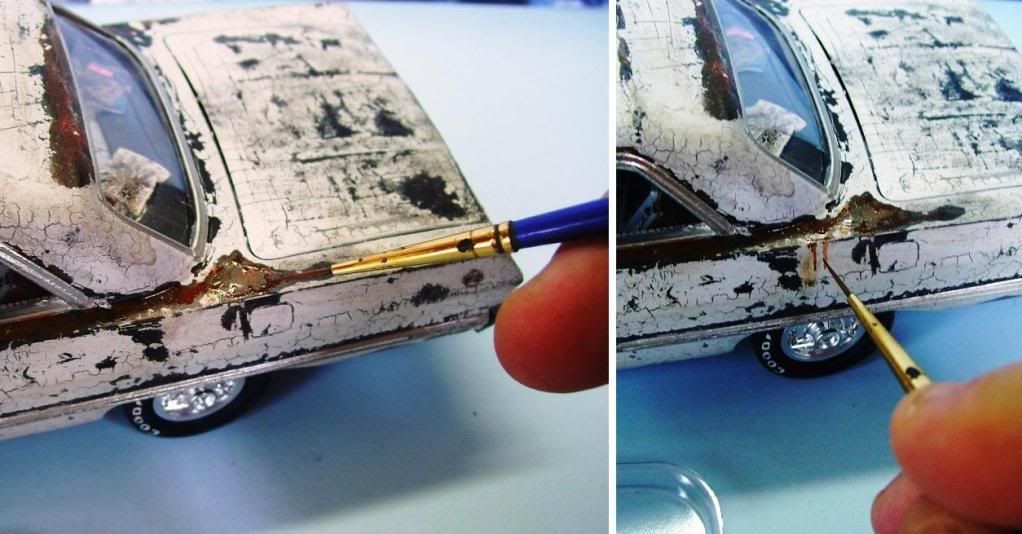
When I had good coverage and was satisfied with the results of the
streaks and drips, I used a brush to apply MIG's weathering pigments
right onto the still-wet pigments, which actually help them to adhere to
the model.
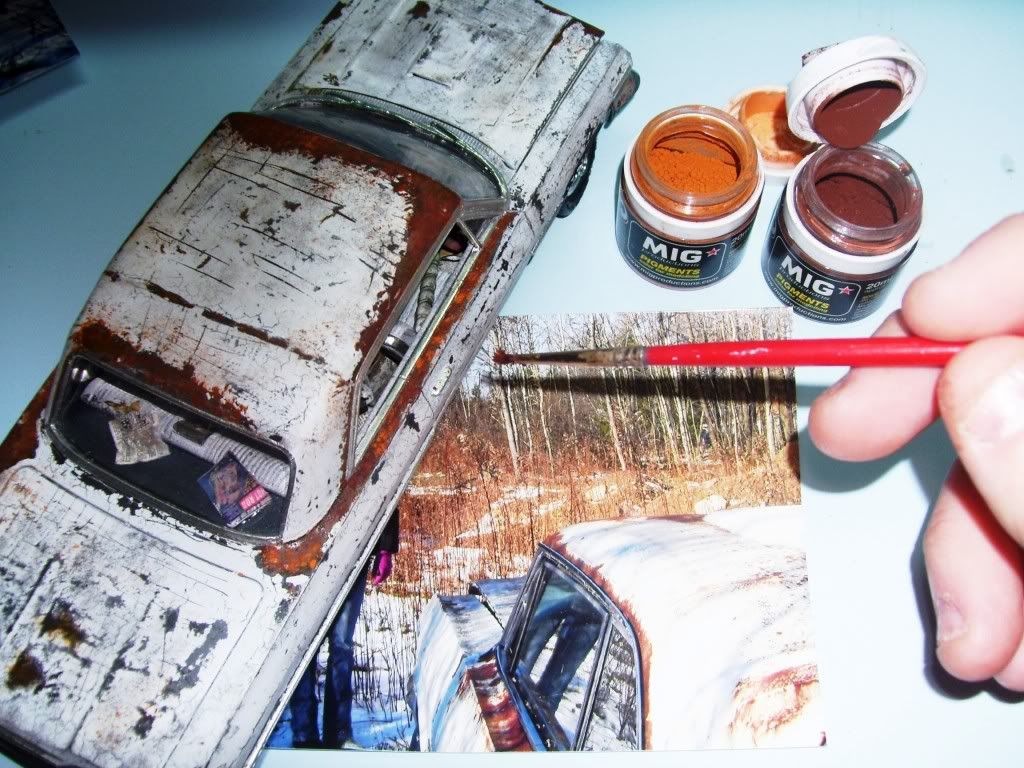
Notice the texture that the pigments lend to the rust. To seal them in
permanently, I use MIG Pigment Fixer. Just use a brush to drop the stuff
rightonto the pigmented areas. Capillary action will spread the liquid
into the pigments, fixing them fast.
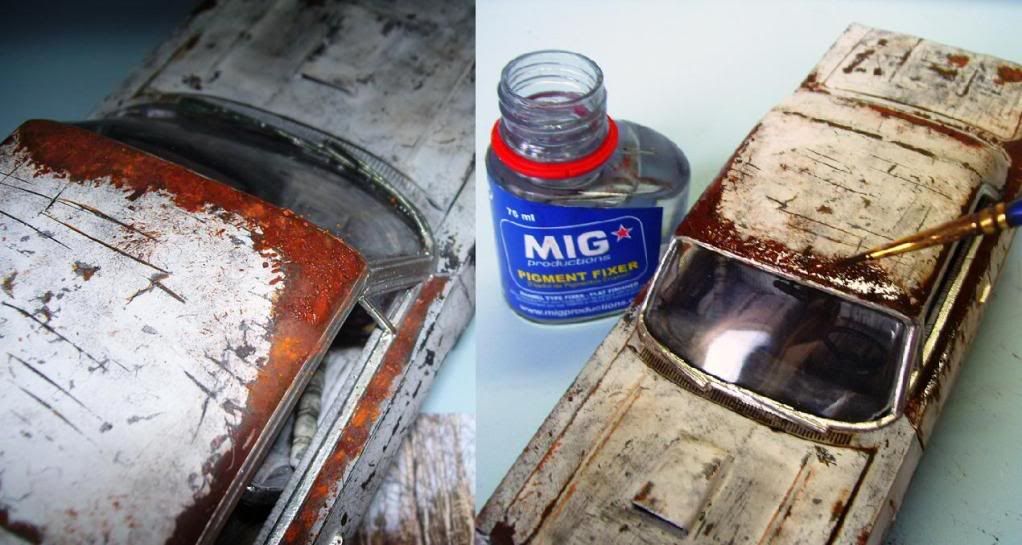
I also used a larger brush to "bounce" on rust spot from oil. A larger brush also helps make different dimensions of streaks as well.
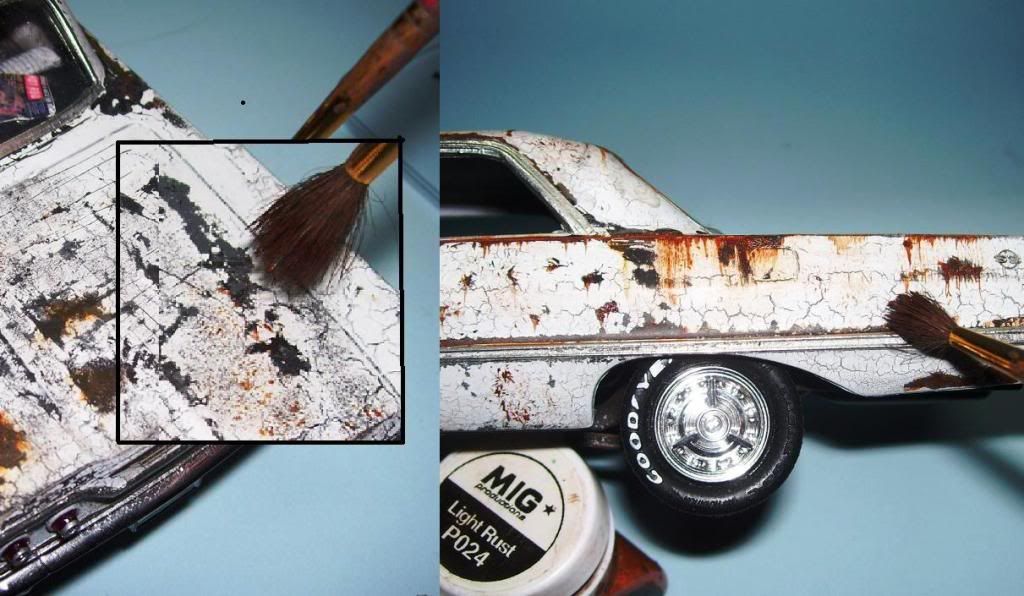
Next, in order to get more layers of variety in the finish, I took some
craft store white acylic paint and dabbed on some pure white in areas.

Results so far:
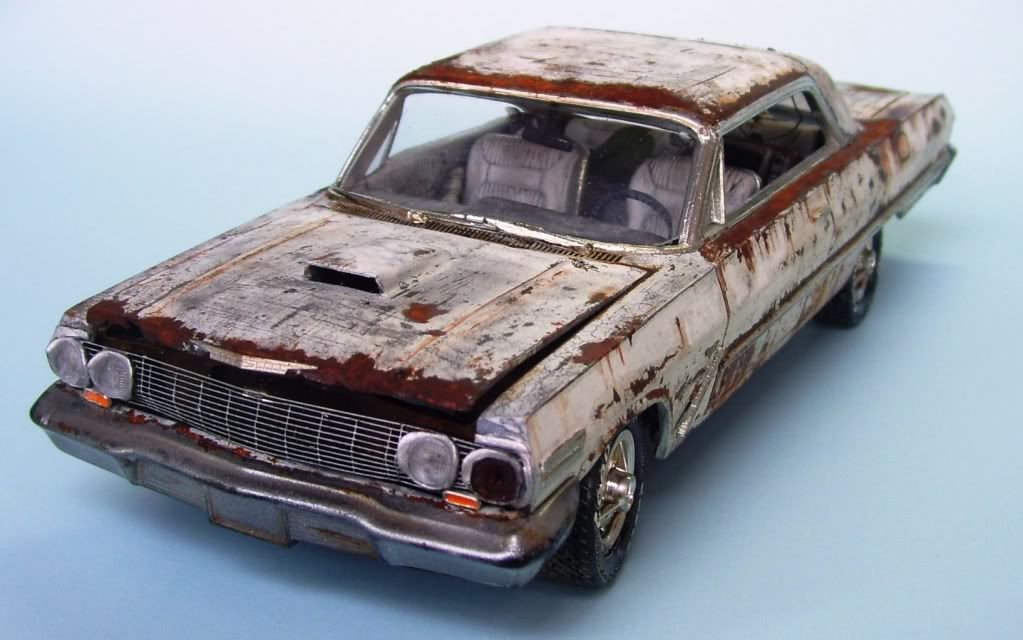
I cleaned up the front fender a little with that white paint. The
wheels were given a wash of tan oil paint, and a light wash of rust
colored oil in the hubs...
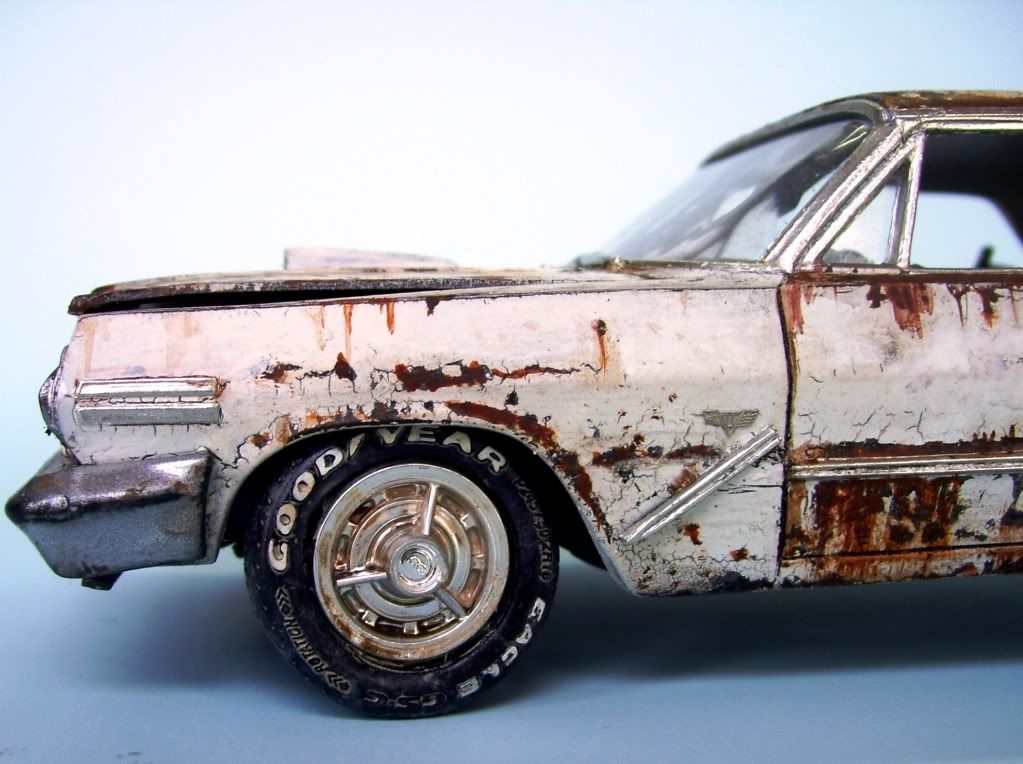
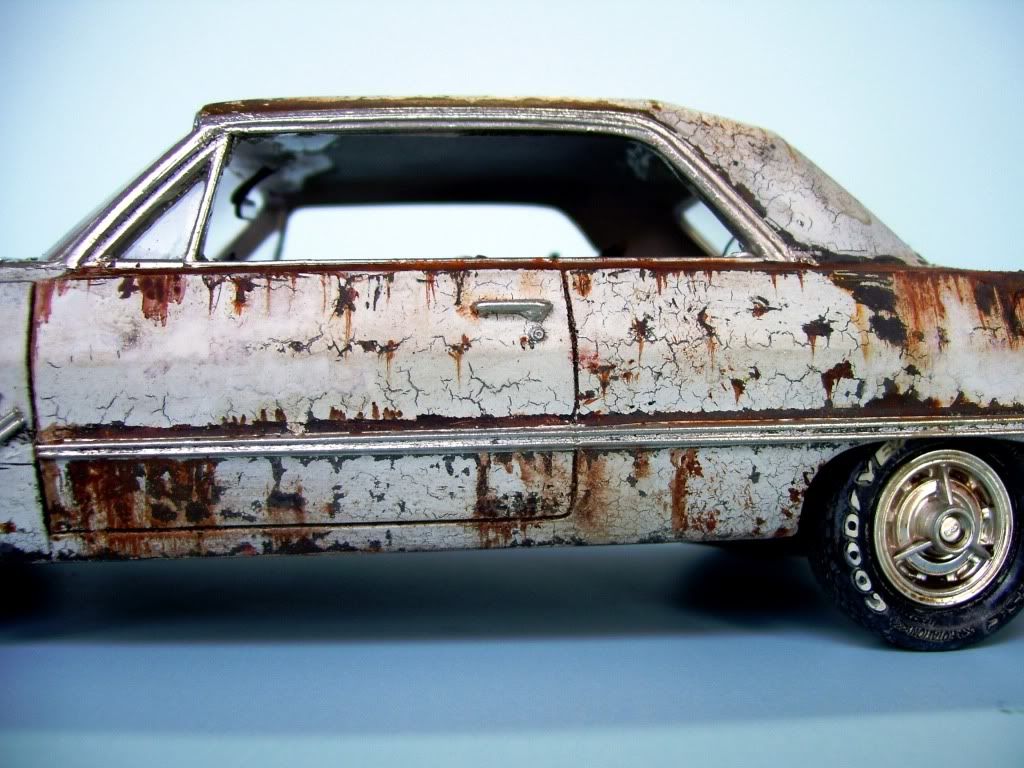
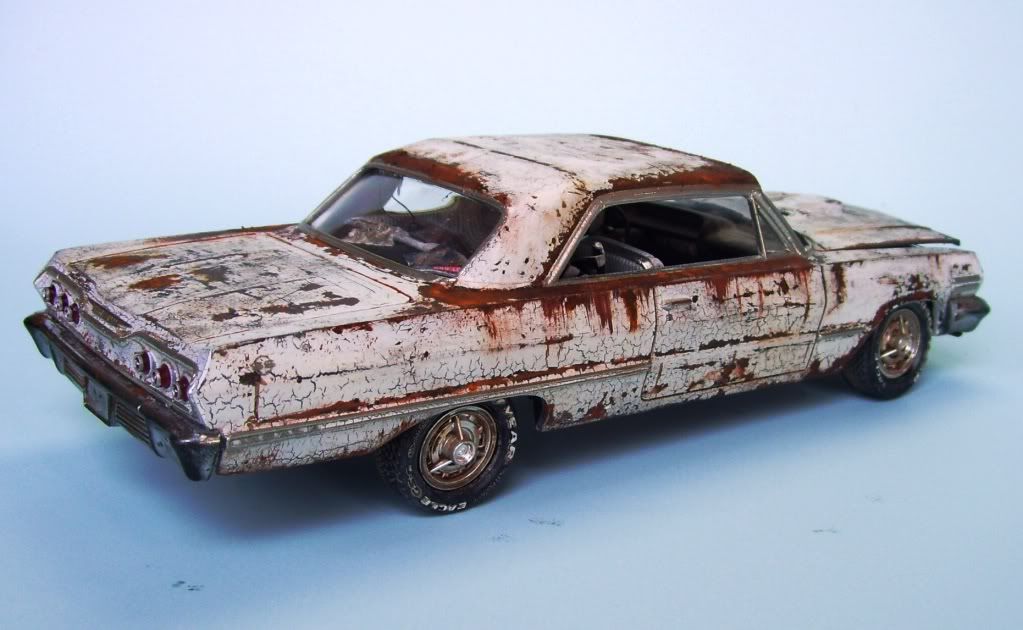

ADDING THE "SNOW CAPS"
Now it's time to add the "snow". For this I use a paper-mache type of
product called Celluclay. First, I add both WHite Craft glue (1), and
acrylic paint (2) to the powdery product. I add a little bit of water to
it, stirring always, just enough to wet the whole mess. Many people who
claim to have problems with this product do so because they don't add
glue and add too much water. Celluclay will shrink as it dries; the ore
water, the more it will shrink. To counter this, I scoop out the bulk of
it onto the sleeve of an old T-shirt, (3) and squeeze the excess water,
glue, and paint out. (4).
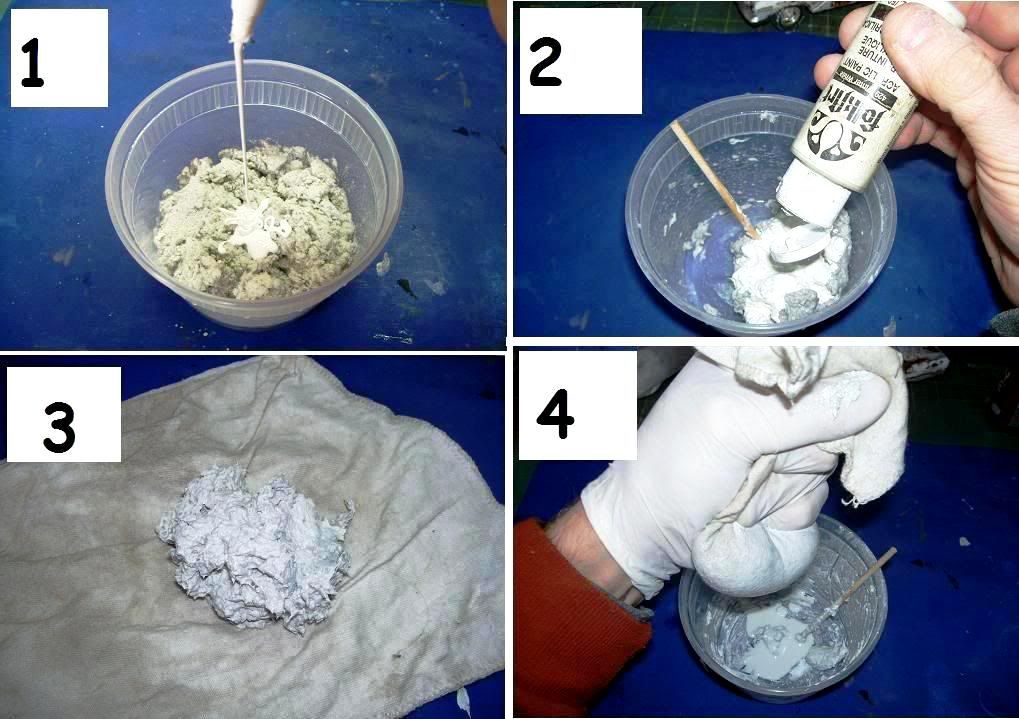
I then scoop out the clay with a cocktail stick and start to apply it to
the appropriate areas.(1). I wet my fingers with water (2) to help
shape it, and also use a wetted paintbrush to carefully shape the edge.
The water on the brush will both shape the perimeter as well as cleaning
the window from any glue-haze.
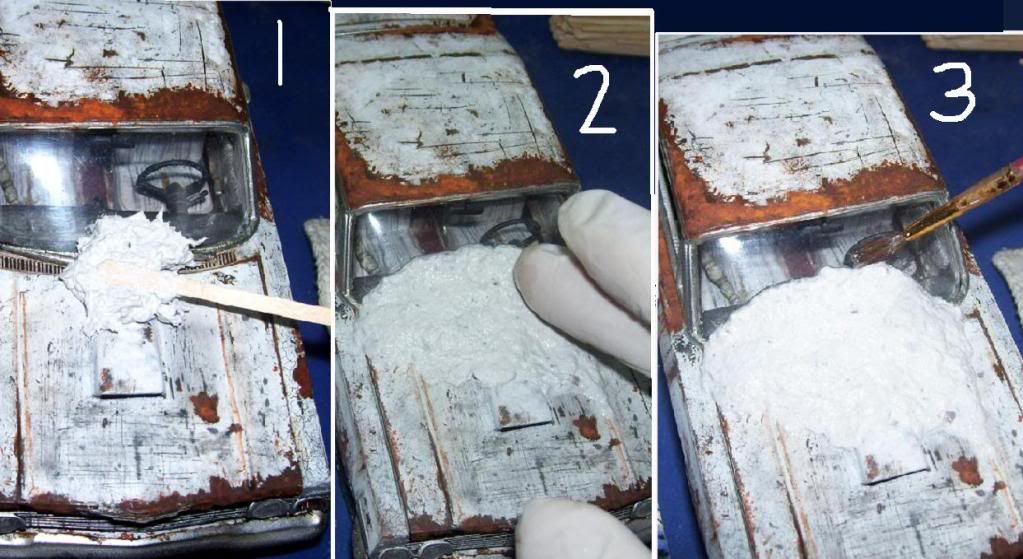
\The three areas have been completed. After this step, I let the model
sit overnight to let the celluclay cure and dry. In the morning, I put
it inside of my real vehicle, on the dashboard n the sun with the
windows up, in order to speed the drying/curing process.
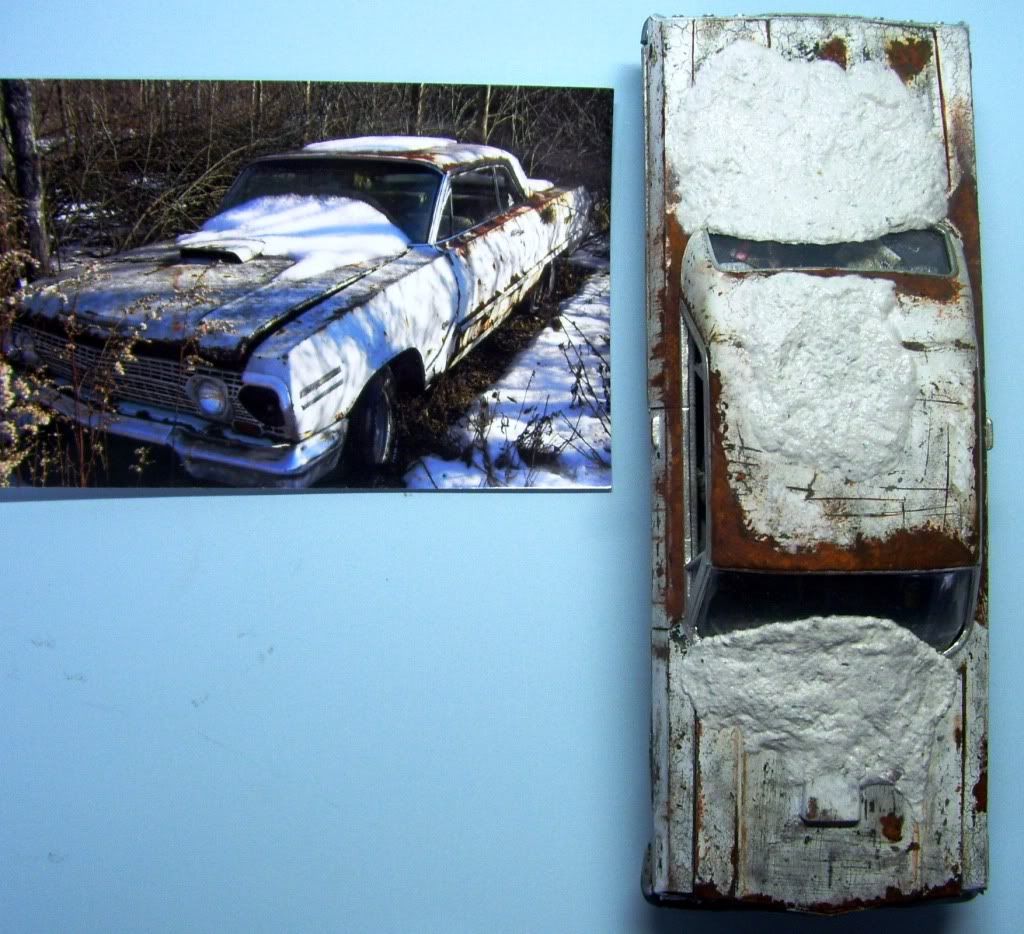
Next, after making sure that the celluclay was hard, I painted it with
white acrylic paint, and then use white Aleene's Craft Glue, which is a
really think craft glue similar to Elmer's to carefully cover the
celluclay parts.
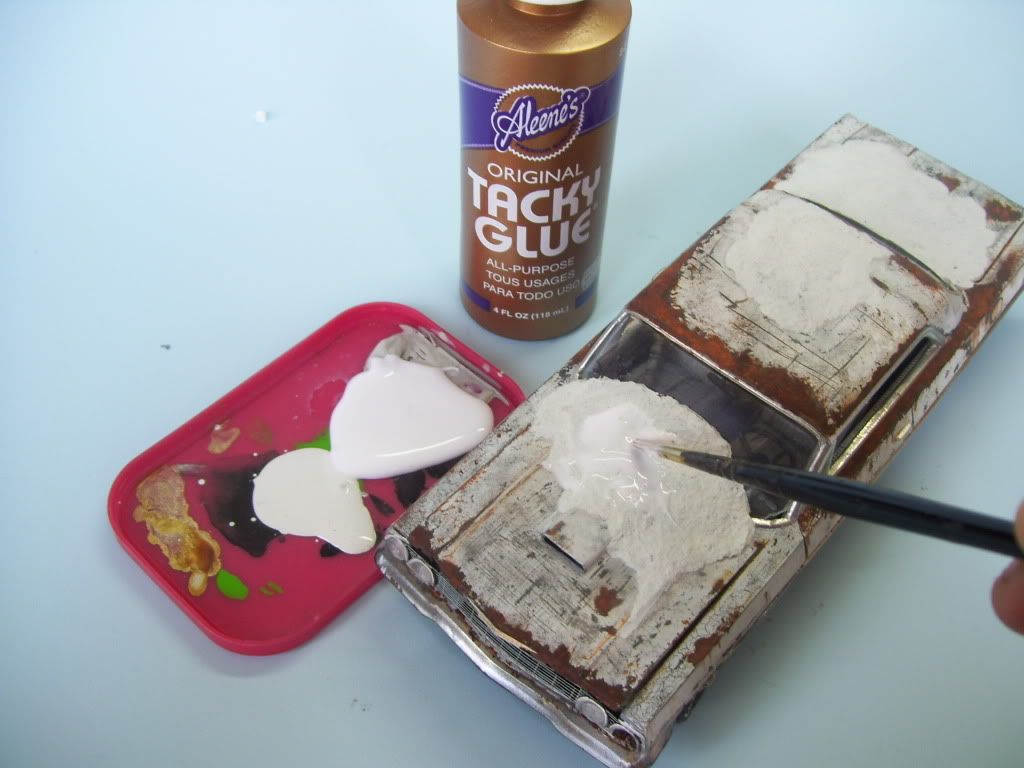
Next, using Woodland Scenics' snow powder, I carefully shake out a
covering of "snow" onto the wet glue. I do ONE SECTION at a time! This
glue dries too fast to let it sit around.

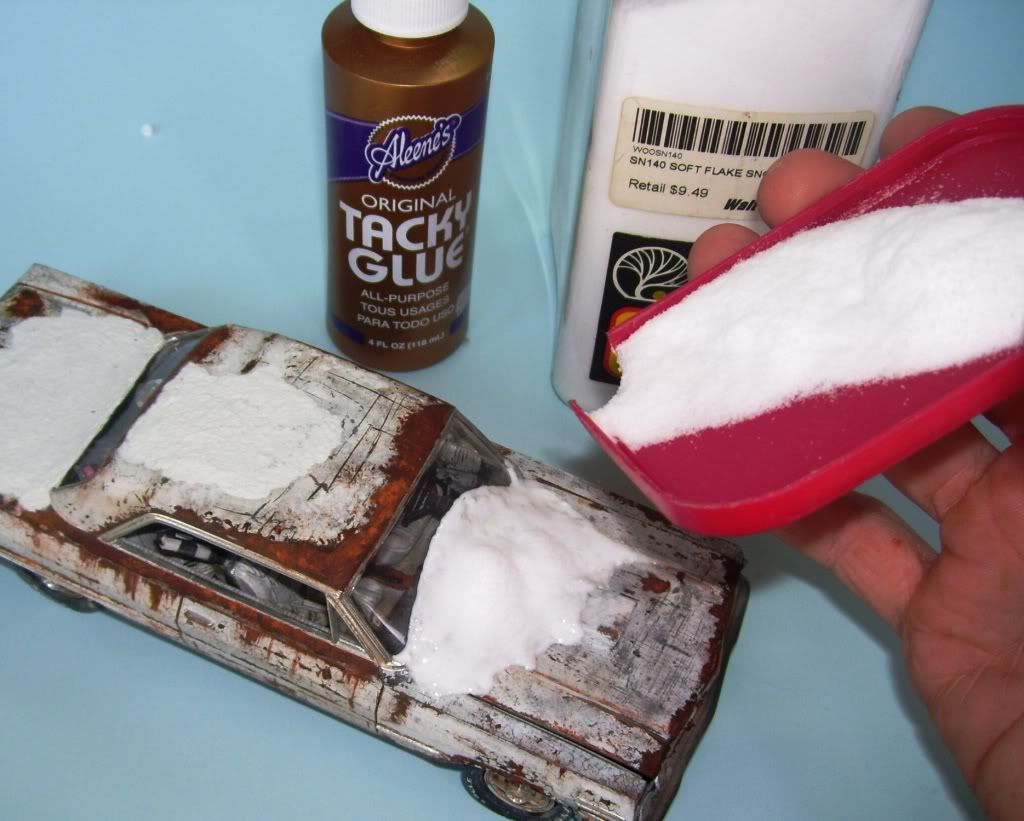
I applied a copious amount, and tamped it down with my fingers
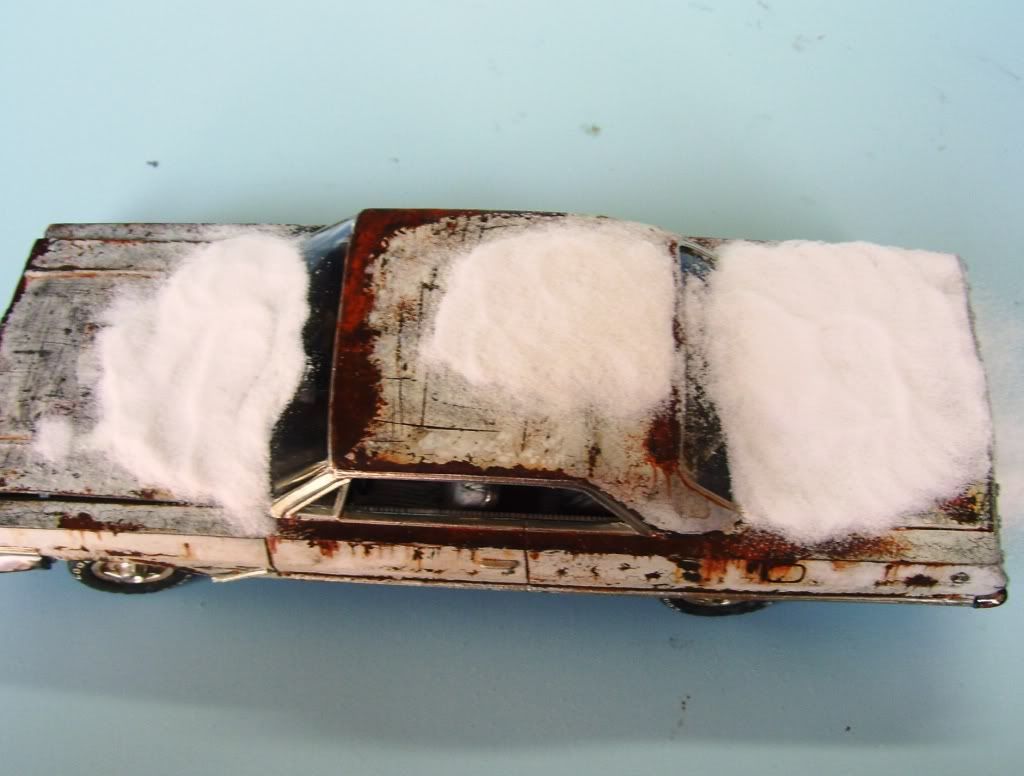
I let it sit for about 10 minutes, and then turned the car over to get
rid of the excess, and here's the result!
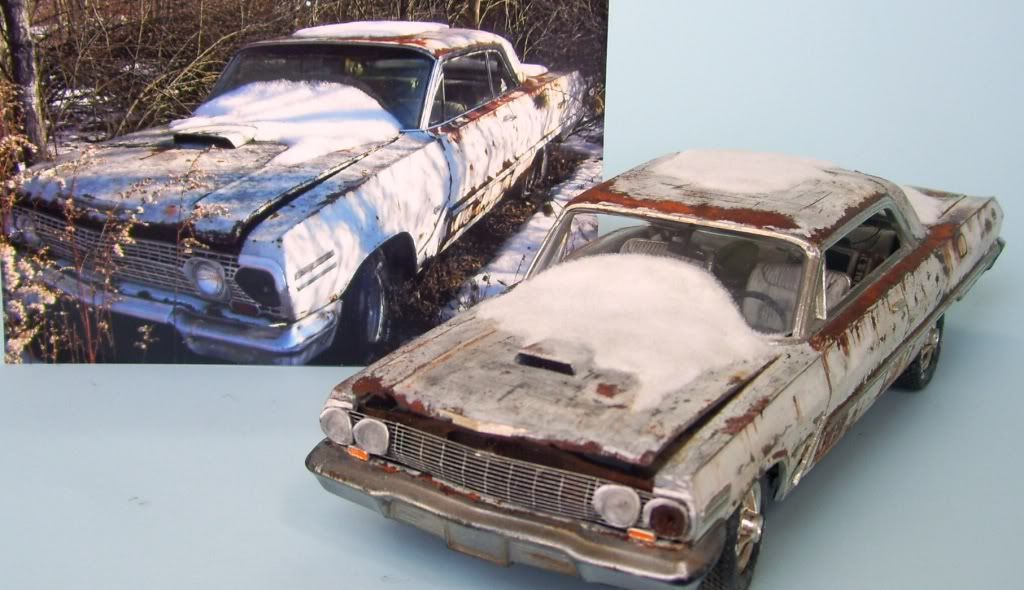
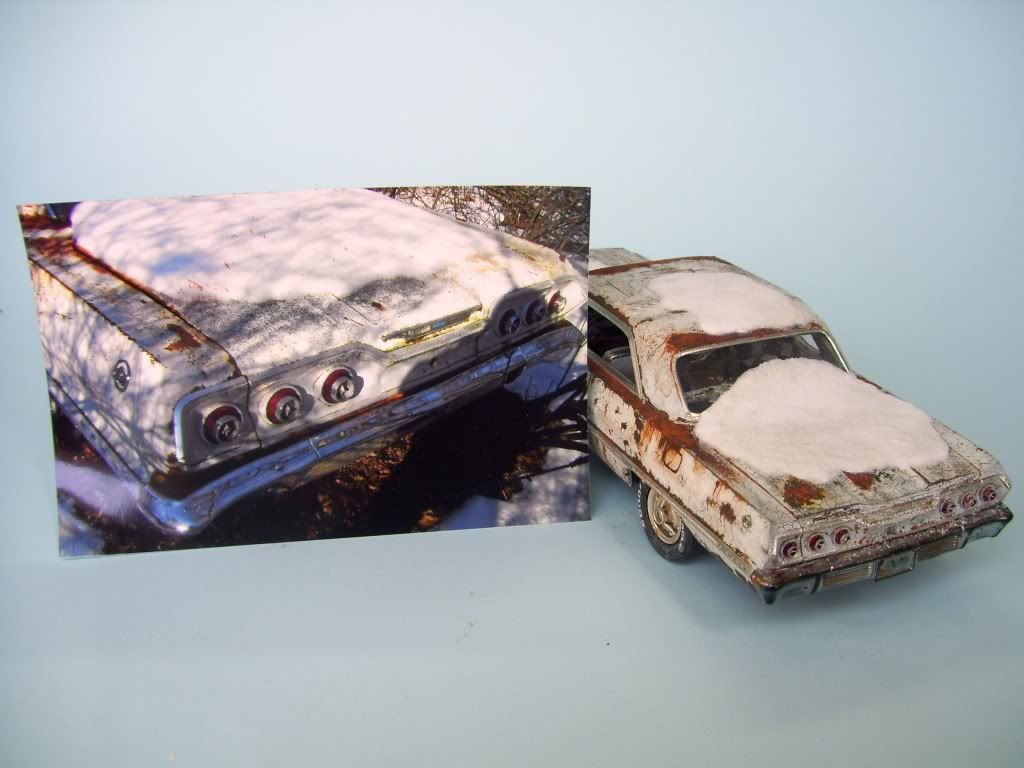
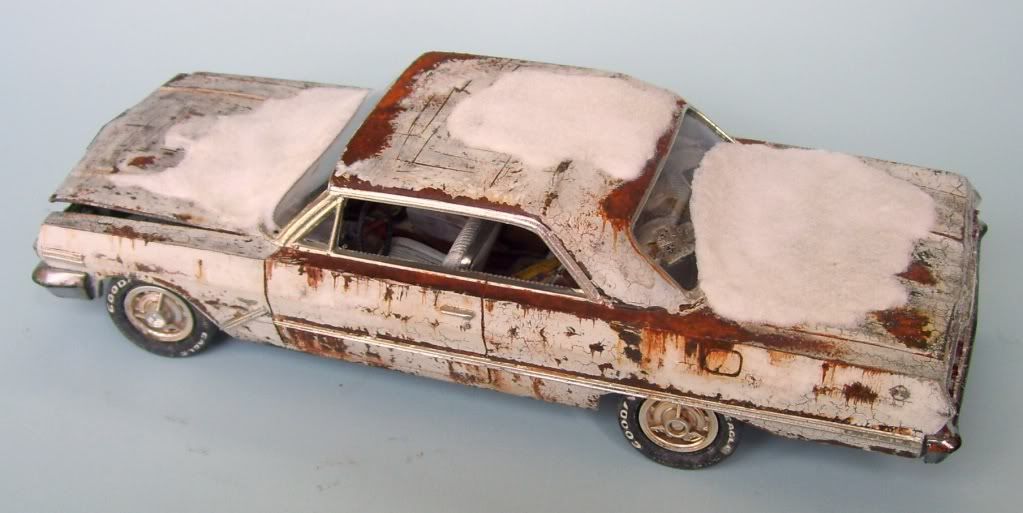
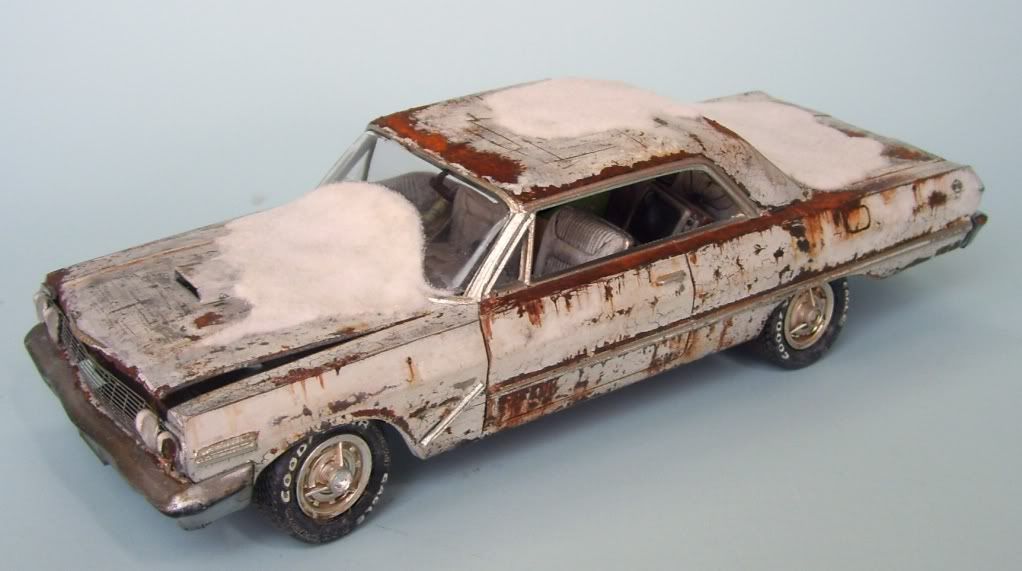
Now comes making the base, which is being varnished and sealed at the
moment. Stay tuned, and thanks for any comments or critiques! Comments
are appreciated and welcomed! 